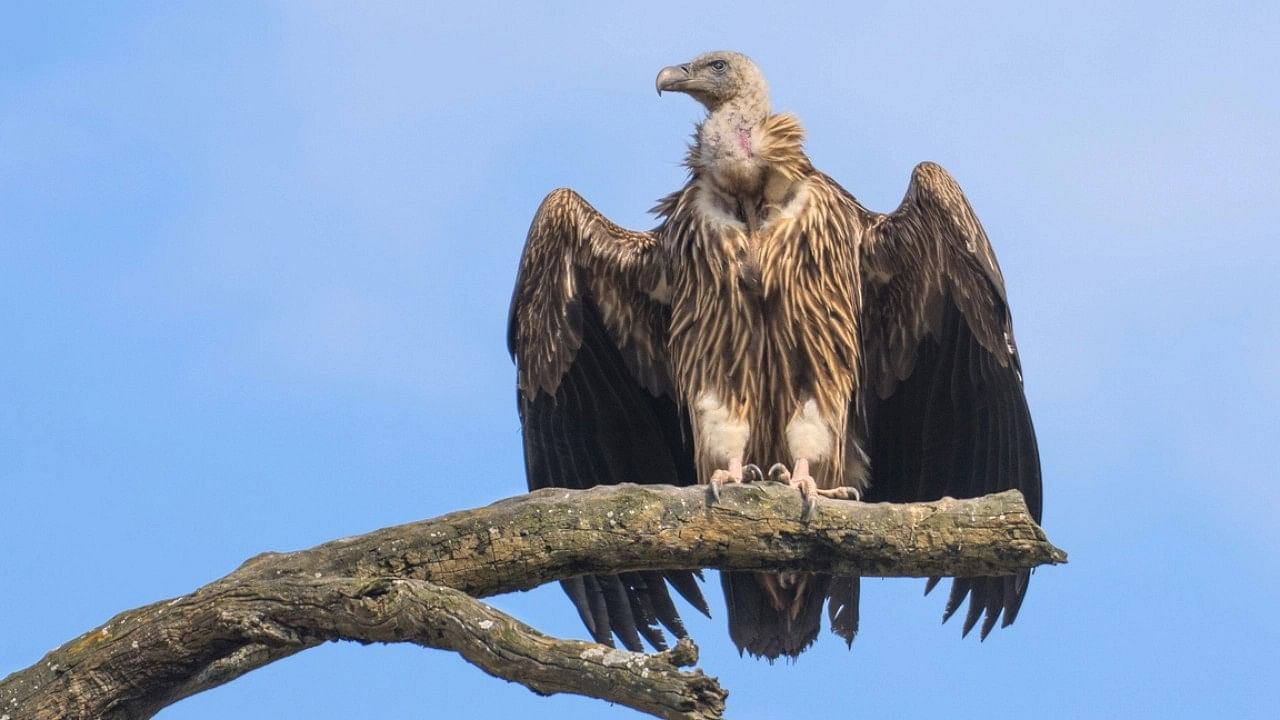
Representative image of a vulture.
Credit: iStock Photo
Mumbai: India’s tiger reserves hold huge potential for safe release of captive bred vultures - and save the species from the threat of extinction, according to Kishor Rithe, the Director of Bombay Natural History Society (BNHS).
The population of Gyps species – White-rumped vulture (Oriental white-backed vulture), Indian vulture (Long-billed vulture), and Slender-billed vulture – crashed during the mid-1990s throughout the Indian sub-continent.
According to research over the years, vultures (Jatayu) that feed on the carcasses of cattle treated with the Non-steroidal Anti-inflammatory Drugs (NSAIDs), in most likelihood die.
The Mumbai-headquartered BNHS is playing a lead role in the vulture conservation programme.
The BNHS and Royal Society for Protection of Birds (RSPB) have been managing four Vulture Conservation Breeding Centres (VCBC) across the country in partnership with the Governments of Haryana in Pinjore (2001), West Bengal in Rajabhatkhawa (2005), Assam in Rani, Guwahati (2007), and Madhya Pradesh in Bhopal (2011).
According to Rithe, over the past 20 years, India’s tiger reserves (TRs) have achieved remarkable success.
“The National Tiger Conservation Authority (NTCA) reports a significant increase in tiger population,” he said pointing out that several villages within tiger rears like Melghat and Tadoba in Maharashtra and Satpuda and Kanha in Madhya Pradesh, among others, have been relocated, creating NSAID-free areas 1,500 to 2,500 sq kms.
These areas harbour wild prey free from the NDAIDs.
The BNHS has signed an MoU with the Maharashtra government and are in talks with Madhya Pradesh, Rajasthan and Assam to utilise the inviolate areas to areas to release captive-bred vultures from BNHS-run conservation breeding centres.
The TRs that BNHS is looking at are Kaziranga National Park & Tiger Reserve (Assam), Veerangana Durgavati Wildlife Sanctuary (Madhya Pradesh) and Sariska Tiger Reserve (Rajasthan).
Rithe said that in January 2024, the Maharashtra government launched the Rashtriya Satayu Samvardhan Prakalp, rewilding 20 captive-bred vultures in Pench and Tadoba-Andhari TRs.
According to details shared in Hornbill, the magazine published by the BNHS, the Vulture Conservation Breeding Programme (VCBP) has been successful in India, producing more than 700 vultures in captivity, providing 80 birds for breeding and 59 for release into the wild to build the wild population.
The Vulture Safe Zone (VSZ) aims to create safe feeding grounds for vultures that are free from vulture-toxic NSAIDs.